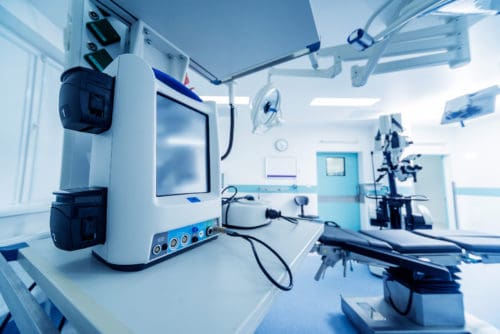Bringing a medical device from concept to market requires understanding the product development journey. It involves careful planning, precise execution, and continuous adaptation to evolving regulatory standards and market demands. From the initial ideation phase to prototyping and clinical trials, each step must be managed to ensure the efficacy of the final product.
At Omnica Corporation, we specialize in revolutionizing and simplifying design control documentation and Design History File (DHF) processes for medical devices. With over 40 years of industry experience, we have solidified our position as a premier design engineering company. This allows us to offer solutions tailored to meet the unique needs of medical device manufacturers.
Key Steps in Medical Device Product Development
The following steps ensure that medical devices effectively address healthcare challenges while meeting regulatory standards:
1. Conceptualization
The first phase is identifying unmet medical needs, brainstorming solutions, and assessing feasibility. Market research and stakeholder input refine concepts to align with clinical requirements and commercial opportunities. Conceptualization also includes accomplishing a detailed competitive analysis to better understand existing solutions and market gaps.
2. Design and Development
In this phase, detailed engineering specifications are drafted, and prototypes are developed for testing and validation. Iterative design reviews, risk assessments, and feasibility studies ensure that the product meets safety and efficacy requirements while addressing user needs effectively. This stage also includes collaboration between engineering teams, regulatory experts, clinicians, and end-users to gather feedback.
3. Regulatory Compliance
Regulatory approval is a critical milestone in medical device development. This step involves navigating complex regulations — such as FDA requirements in the United States — to demonstrate the safety and effectiveness of the device. It also includes preparing and submitting comprehensive documentation and additional data to the regulatory authority.
4. Commercialization and Market Launch
Once regulatory clearance is obtained, the main focus turns to commercialization and market launch. This entails scaling manufacturing processes, establishing distribution channels, and developing marketing strategies to promote the product’s adoption. It also encompasses post-market surveillance and ongoing regulatory compliance to maintain product safety and effectiveness.
Other important steps in medical device product development include the following:
Lifecycle management and product maintenance
This entails monitoring product efficacy, gathering user feedback, and implementing updates or modifications as needed.
Continual improvement and innovation
This involves staying abreast of technologies, market trends, and regulatory changes to identify opportunities for product diversification.

Customer training and support
This may include creating user manuals, instructional videos, or online modules to educate users on proper device use, maintenance, and troubleshooting.
Health economics and reimbursement strategy
This refers to analyzing and planning the economic aspects of healthcare delivery, particularly about new medical devices.

Clinical adoption and training programs
These initiatives facilitate integrating and utilizing medical devices within clinical settings.

Intellectual property protection and patent strategy
These safeguard innovations, inventions, and proprietary assets through legal mechanisms like patents, trademarks, and copyrights.
Unique Considerations in Developing Class I, II, and III Medical Devices

In contrast, Class II devices are moderate-risk and often require specific controls, such as special labeling, performance standards, or post-market surveillance. Development efforts for these devices typically entail more rigorous testing, documentation, and regulatory submissions. Manufacturers must balance meeting regulatory requirements and delivering innovative solutions that effectively address clinical needs and user preferences.
Class III devices have the highest risk and undergo the most stringent regulatory scrutiny. They also need pre-market approval (PMA) or pre-market notification from the FDA or global agencies. Developing these medical devices involves extensive clinical data collection, rigorous testing, and risk management strategies. It also requires interdisciplinary collaboration among engineers, clinicians, regulatory experts, and clinical researchers throughout the development lifecycle.
Importance of Industrial Design in Medical Device Product Development
Industrial design is the process of developing and refining a product's appearance, functionality, and usefulness to maximize user experience and market appeal. Here are its key significances in medical device product development:
-
Enhancing User Experience
Industrial design is crucial in improving the overall user experience of medical devices. By focusing on ergonomics, aesthetics, and usability, industrial designers can create intuitive and efficient products for healthcare professionals. This focus on user-centric design significantly enhances satisfaction, improves patient outcomes, and increases adoption rates.
-
Differentiating the Brand and Gaining Competitive Advantage
In a crowded marketplace, distinctive industrial design can be a key differentiator for medical devices. A visually appealing and well-designed product can set it apart from competitors, attracting attention from healthcare providers, patients, and investors. Companies can also establish a unique brand identity and position themselves as leaders in innovation and quality by investing in industrial design.
-
Ensuring Compliance With Regulatory Standards
Industrial design considerations are essential for complying with regulatory standards and requirements. Design elements such as materials selection, labeling, and user interface design must align with regulatory guidelines to facilitate approval processes. Furthermore, engaging industrial designers in the development process allows for proactive consideration of regulatory factors.
-
Facilitating Manufacturing and Assembly
Industrial designers collaborate closely with engineering and manufacturing teams to optimize product manufacturability and assembly processes. By designing for ease of manufacturing, they contribute to cost reduction, scalability, and overall product quality. This balance between design and manufacturing considerations from the outset also streamlines production workflows and accelerates time to market.
-
Optimizing Ergonomics and Accessibility
The designers mostly focus on optimizing ergonomics and accessibility to ensure that medical devices are comfortable and easy to use. They incorporate principles of human factors engineering and accommodate variations in user capabilities, preferences, and environmental conditions. This results in medical devices that are more user-friendly, intuitive, and adaptable to diverse user needs and contexts.
-
Promoting Sustainability and Environmental Responsibility
One aspect of promoting sustainability in industrial design is the selection of environmentally friendly materials and manufacturing processes. Designers prioritize using recyclable, biodegradable, or renewable materials that minimize environmental impact. They also explore alternative manufacturing methods, such as additive manufacturing or lean production techniques.
The Role of Customer Feedback and Market Analysis
Customer feedback and market analysis are integral in successfully developing and commercializing medical devices. Gathering and analyzing input from potential users offers valuable insights into their needs, preferences, and pain points. This guarantees that medical devices are designed with the end user in mind, leading to higher satisfaction and usability.
Market analysis also helps developers understand the landscape, market trends, and opportunities or threats. Companies can make informed decisions about product positioning, pricing, and distribution strategies by conducting market research and analyzing competitor products. Understanding the market landscape allows developers to identify unmet needs and target specific customer segments.
Moreover, integrating customer feedback and market analysis throughout the medical device product development lifecycle fosters a customer-centric approach. Developers can iterate on product designs by continuously soliciting user feedback, monitoring market dynamics, and capitalizing on new opportunities. They can also stay attuned to market dynamics and emerging trends.
